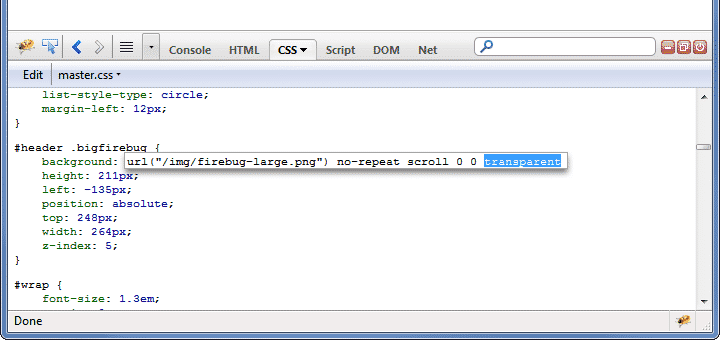Using Firebug in Web Design
Every now and then, you come across a tool that you can’t live without. In my infant days of web design, I didn’t know about Firebug. It was really frustrating when I needed to style my website, and I would refresh, only to find that the style didn’t change. It would take forever just to try to figure out why a style wasn’t changing. I knew there was something overriding my style, but trying to figure out what it was turned out to be a big ordeal. Then, I discovered Firebug. Thank the heavens for Firebug and the ability to inspect elements! What used to be a Scooby Doo mystery quickly became a quick find and fix situation. Below, you’ll see how this works and why it is so handy.
So, you’ve created a mockup, and then built it for real with HTML and CSS. When you start to test it in the browser, you find that it doesn’t look how you intended. Maybe a header is the wrong color, or images don’t have enough padding. You try to go back and edit it, only to find that it doesn’t make sense. Here’s how easy Firebug is. All you have to do is Right click on the problem element in your browser, and select Inspect Element. In a split second, a window comes up below, showing you the rendered html, and on the right side, you’ll find the CSS associated with that element’s style. The most recent CSS is at the top, and everything else is stacked in order below.
You can turn off a certain CSS by clicking the disable symbol when you hover over the CSS. Another cool thing you can do is double-click the CSS and add a style, just to test the result. This is amazing! This is a great way to try out the look of certain styles, without having to flip between files and saving.
Here are some other things you can do with Firebug:
- Find and inspect elements without styles applied to them.
- Those same elements can have temporary styles applied to them in FIrebug, just to see how they look.
- You can inspect elements, and Firebug supplies a breadcrumb trail to the CSS. This makes it easy to target child elements with CSS.
- Firebug tells you what CSS file that the CSS is found in. This is perfect for sites with multiple stylesheets.
- Firebug tells you what line the CSS Style is found within the specified stylesheet.
- You can also edit html in the browser, too. This allows you to try different classes on the fly.
- There is also the ability to inspect javascript, too.
Firebug is One of my Go-to Tools
You can do so much with Firebug, which is why it is such an awesome free add-on for Firefox. It makes it so much easier to find and solve CSS blunders without splitting headaches. Another thing to consider is that sometimes it isn’t CSS from a stylesheet that is styling an element. Sometimes CSS from a javascript file can override your styles. If you make modifications to existing sites, Firebug makes it easy to go back in after them and find what styles are where, and what you need to alter in order to change the look.
Do You Use Firebug in Web Design?
I’d love to hear what you think of Firebug. I use it all the time. Keep in mind that you also need to account for Safari, Opera, Chrome and IE when building your websites, nit just FireFox. However, Firebug can take the guess work out of web design when using CSS. What do you use Firebug for? Javascript, CSS? Html? Leave your thoughts in the comments section below.




I stopped using Firebug after I switched from Firefox to Chrome. For editing CSS, i use an OSX app called CSSEdit by MacRabit… which is awesome for editing and testing CSS on a live site.
MacRabit have since included CSSEdit as a tool in their flagship app “Espresso”.